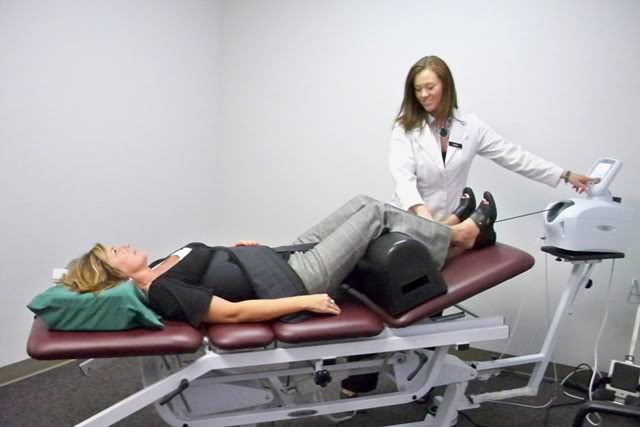 Spinal decompression Midtown residents should know, is a type of nonsurgical treatment that involves stretching the spine through the use of either a motorized device or a traction table in order to relieve back and leg pain.
Spinal decompression Midtown residents should know, is a type of nonsurgical treatment that involves stretching the spine through the use of either a motorized device or a traction table in order to relieve back and leg pain.
Just like traction, spinal decompression works by creating negative intradiscal pressure and lowering the pressure on the spinal disc, the goals of which are to reposition a herniated disc and to create an environment which will facilitate the healing environment for the affected disc, specifically by encouraging the optimal flow of vital nutrients and other substances.
During the therapy session, the spine alternates between controlled stretching and relaxation.
The treatment is often recommended for patients with conditions like lumbar pain, sciatica and neck pain caused by issues with spinal discs.
Broadly speaking, the treatment is pain-free and it is natural for a patient to feel the stretch on his or her spine. However, it should also be noted that spinal decompression therapy is not for everyone. Due to the spinal stretching involved, the treatment is not deemed to be safe for some patients. These include expectant moms, people with broken vertebrae, patients who have artificial discs or implants, people who have undergone unsuccessful back surgery, patients who have undergone spinal fusion treatment, and those who have undergone multiple surgeries and have to recover from these.
Patients with spinal issues like stenosis, infection or tumor, those who have osteoporosis or ankylosing spondylitis, patients taking blood thinning medication, and others whose spines are fragile in nature are not advised to undergo spinal decompression therapy. If a patient experiences any pain during a treatment session, he or she is deemed to be a bad candidate for the treatment.
Ruling these conditions aside, a practitioner will have a thorough consultation with a potential candidate. The patient will be quizzed on his or her particular condition including details like the symptoms experienced, the extent/scale of the pain, timeline, activities that worsen the pain, diagnostic imaging undergone, treatment history.
On top of these, the practitioner also has to get an accurate picture of the patient’s lifestyle including whether the candidate smokes or has diabetes, or his or her activity level and willingness to lose weight.
In the event that a patient is deemed not to be a good candidate for spinal decompression therapy, the specialist may recommend alternatives that the patient may try in order to find relief from his or her condition.














